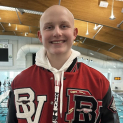Development of targeted combination therapies for rhabdoid tumor

Mentor Name: Patrick Grohar
Mutations in the SWI/SNF chromatin remodeling complex occur in about 20% of human tumors. Rhabdoid tumor is defined by the bi-allelic loss of SMARCB1, one of the core subunits of the SWI/SNF complex; or less commonly SMARCA4 (Kim and Charles, 2014). This tumor is found in the kidney and other soft tissues and is notoriously refractory to treatment. Despite aggressive, multi-modal therapy consisting of surgery, chemotherapy and/or radiation, the four-year survival rate is only 10-40% (Guidi et al, 2020; Lu et al, 2017). Therefore, there is clearly a need for novel therapeutic approaches for this tumor.
Our lab has recently shown that the compound Mithramycin and its second-generation analog EC8042 targets the oncogenic driver mutation of rhabdoid tumor, mutated SWI/SNF. We have shown that Mithramycin displaces mutated SWI/SNF from chromatin to increase apoptosis and differentiation of rhabdoid tumor cells (Chasse et al, 2021). This renders the cells quite sensitive to mithramycin. In contrast, rhabdoid tumor cells are quite resistant to a number of traditional chemotherapy agents including doxorubicin, SN38 and etoposide. Further, while both mithramycin and EC8042 are not dependent on DNA damage to target rhabdoid tumor cells, they markedly sensitize cells to a number of DNA damaging agents (Ribeiro-Silva et al, 2018). Nevertheless, it is not clear why rhabdoid cells are so resistant to traditional chemotherapy or how mithramycin alters sensitivity.
The overall goal of this project is to develop mithramycin based combination therapies for rhabdoid tumor. We hypothesize that mithramycin sensitizes rhabdoid tumors to DNA damage by displacing the mutant SWI/SNF complex from chromatin to cause a gain of PRC2 activity and H3K27me3 at loci responsible for resistance to chemotherapy. To test this hypothesis, we will determine if mithramycin exposure of rhabdoid tumor cells, leads to a gain in H3K27me3 at the GTF2H1 locus to confer platinum sensitivity. GTF2H1 plays an important role in the nucleotide excision repair (NER) pathway and is known to be aberrantly activated in RT cells (Ribeiro-Silva et al, 2019). Therefore, we will determine if this aberrant regulation mediates resistance to a panel of clinically relevant platinum agents. The results will provide insight into mechanisms of drug resistance in rhabdoid tumor and potentially a clinically relevant combination therapy for further preclinical testing.

